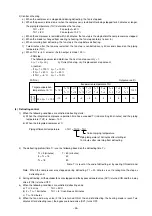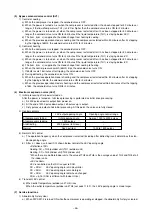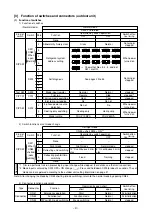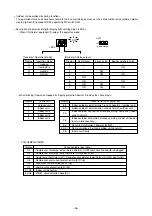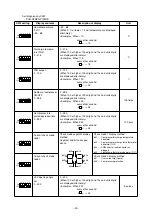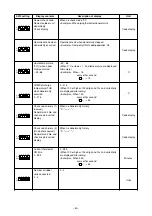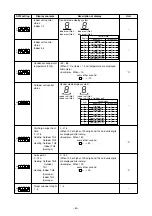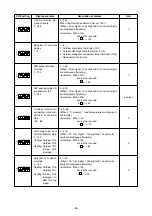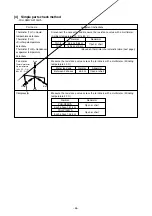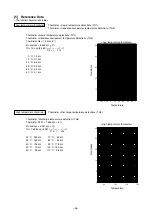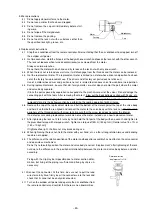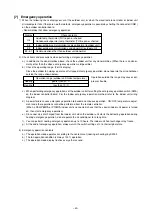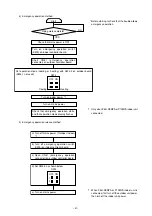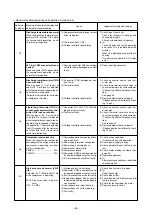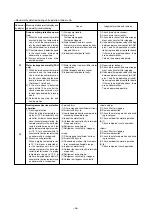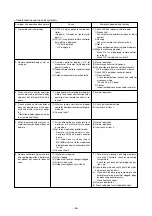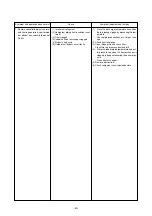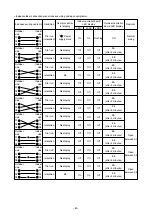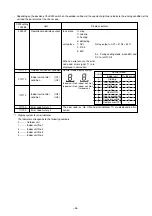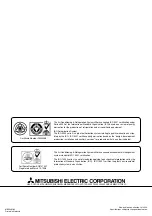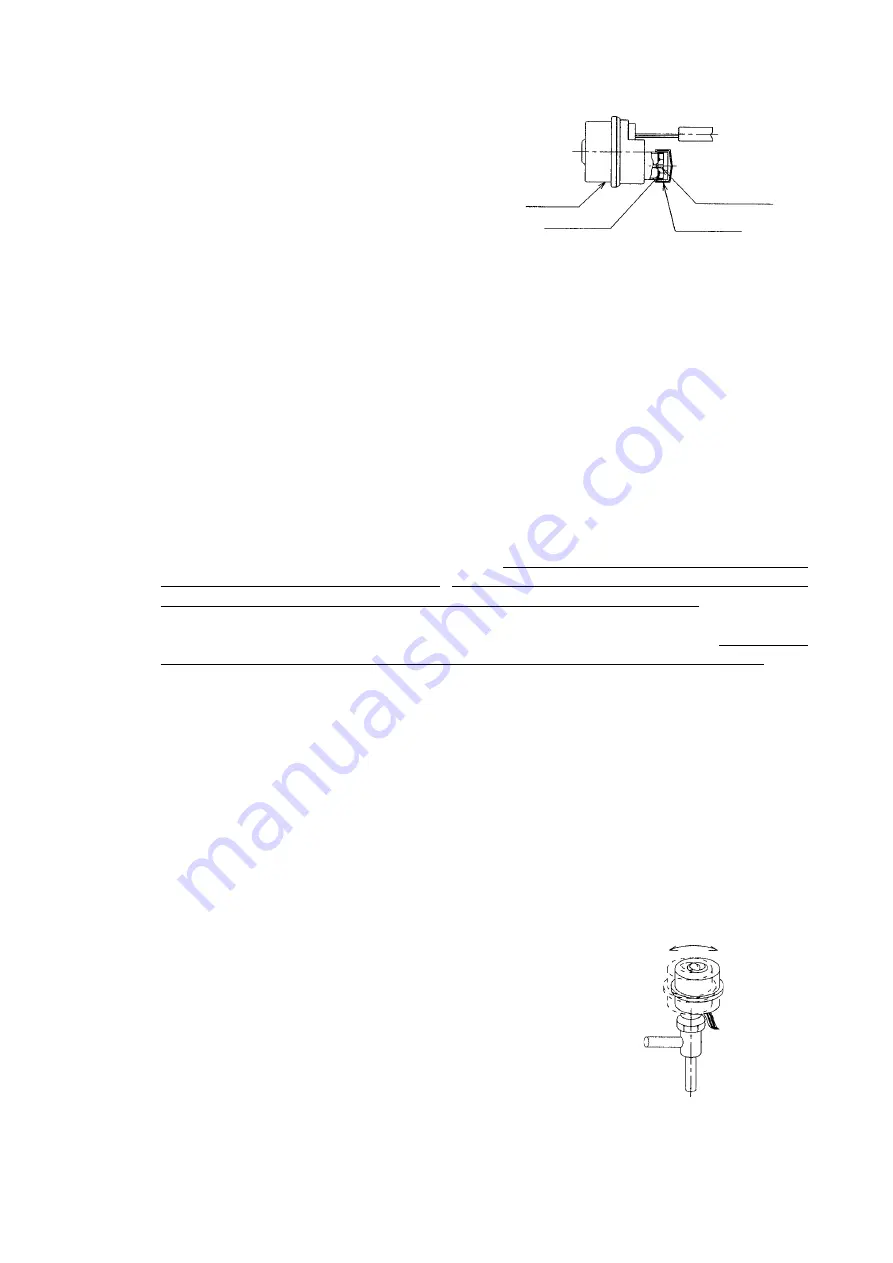
–39–
3. Work precautions
3.1 Do not apply abnormal force to the motor.
3.2 Do not use a motor that has been dropped.
3.3 Do not remove the cap until immediately before start-
ing work.
3.4 Do not wipe off the molybdenum.
3.5 Do not remove the packing.
3.6 Do not coat the lock nut with a substance other than
the specified lock tight, grease, etc.
4. Replacement instructions
4.1 Stop the air conditioner from the remote controller. After confirming that the air conditioner has stopped, turn off
the outdoor unit power.
4.2 Get two wrenches. Hold the flat part of the body with one wrench and loosen the lock nut with the other wrench.
The lock nut loosens when turned counterclockwise as viewed from the motor.
Always use two wrenches.
Do not hold the motor with one hand and try to loosen the lock nut with only one wrench.
4.3 When the lock nut is turned several turns, it will disengage from the threads and the motor can be removed.
4.4 Get the replacement motor. The replacement motor is limited to a motor whose driver end position has been
set at the factory for replacement use. (The driver end of factory set parts does not stick out.)
Use of a motor whose driver end position is not set is related to erroneous valve flow control or no operation.
4.5 During replacement work, be sure that dirt, foreign matter, or water does not enter the part where the motor
and valve body separate.
(Since the part exposed by separation corresponds to the mechanical part of the valve.) Do not damage the
connecting part with the tools. After removing the motor, 1 blow out the body bellows section with N
2
gas, etc.
to remove the water clinging to the inside and 2 after fan stop processing of the pertinent unit in the motor
removed state, dry the bellows section by performing the cooling operation for 30 minutes.
4.6 Remove the cap of the replacement motor and butt the bottom of the motor against the top of the valve body
and hold it so that both are aligned and connect the motor to the valve body with the lock nut. Coat the entire
periphery of the threaded part with screw lock. Be sure that the screw lock does not enter the interior.
If a defect occurs during replacement work, do not use the motor, instead use a new replacement motor.
4.7 After tightening the lock nut 2 to 3 turns by hand, hold the flat part of the body with one wrench and tighten to
the prescribed torque with a torque wrench. Tighten to a torque of 15N·m (150 kgf·cm) (Control value 15
±
1 N·m
(150
±
10 kgf·cm))
If tightened too tight, the flare nut may break during use.
4.8 When tightening the lock nut, hold the motor with your hand, etc. so that strong rotation torque and bending
load are not applied.
4.9 The difference of the relative positions of the motor and body after assembly has no affect on the valve control
and open/close mechanism.
Do not try to forcefully position the motor and valve body to correct “displacement” after tightening of the lock
nut due to the difference in the positional relationship between the motor and valve body before and after
assembly.
Fixing with the clip may be impossible due to motor section defor-
mation, but fixing of the piping is sufficient and fixing by clip is un-
necessary.
4.10 Connect the connector. At this time, be sure not to pull the lead
wires forcefully. Also, firmly insert the connector up to the lock and
check that it cannot not be easily disconnected.
4.11 Turn on the outdoor unit power and operate the air conditioner from
the remote controller and confirm that there are no abnormalities.
Rotation direction
“displacement” is OK.
Motor
Packing
Molybdenum
Cap

